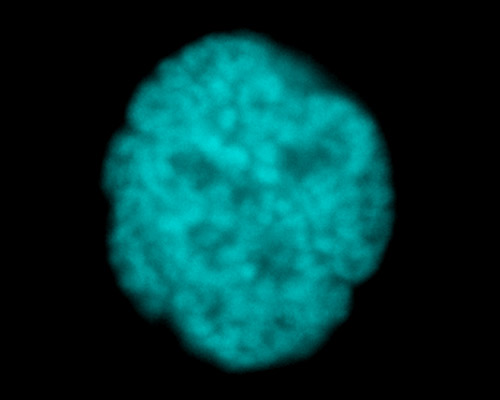mCerulean Fused to Human Histone H2B

An early alternative to blue fluorescent proteins was the cyan-fluorescing Aequorea victoria GFP variants that resulted from substitution of the tyrosine at amino acid position 66 with tryptophan. Through further mutations and refinements, enhanced, high-performance CFPs, such as ECFP and Cerulean, were developed. The monomeric cyan fluorescent protein mCerulean highlights the nucleus and condensed chromosomes when fused to histone H2B in human cell cultures, as shown above. H2B is one of five major classes of histones that have been described. Though at one time H2B and other histones were generally assumed to function primarily as a kind of packing for DNA to coil around, today the proteins are thought to play a much more active role in several important processes, including gene regulation, the transcription of DNA, and chromatin transformation during mitosis.



